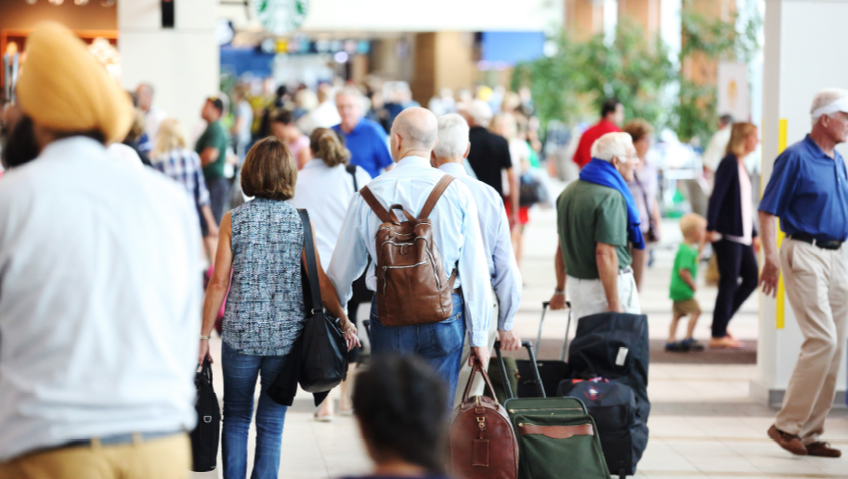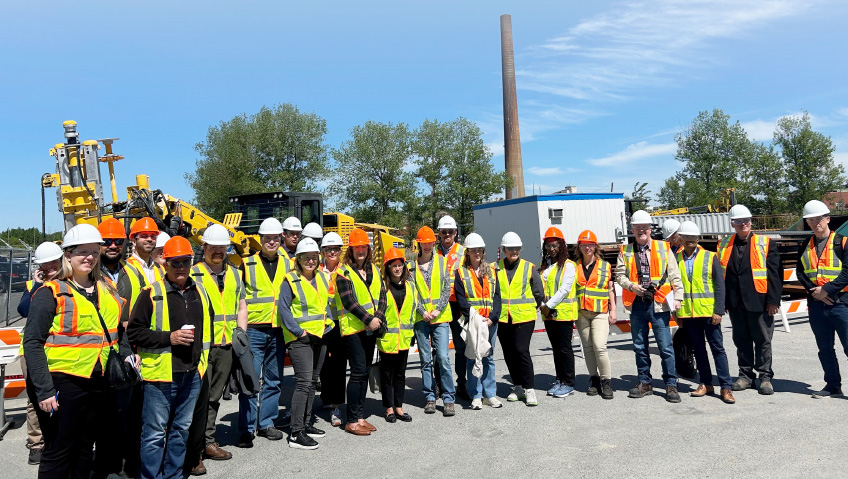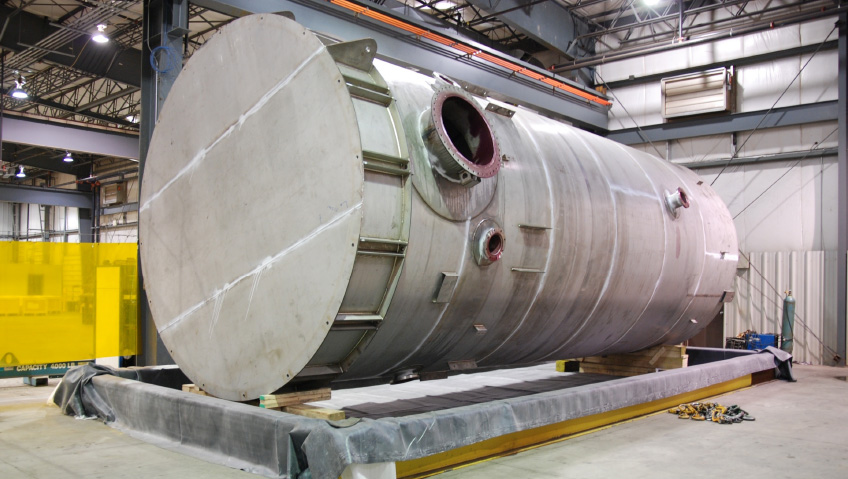Halifax Stanfield International Airport (Halifax Stanfield), Atlantic Canada’s largest airport, served 3.1 million passengers and processed 37,000 metric tonnes of cargo last year, generating an annual economic impact of $3.4 billion for the regional economy.
How it all began
The Halifax airport, located 30 minutes from downtown Halifax, was built by the Federal Department of Transport and opened in 1960, serving approximately 180,000 passengers annually in its early years. Originally, it was managed by Transport Canada, but that changed on February 1, 2000, when Halifax International Airport Authority (HIAA) took over operational and managerial control.
This control, according to a government policy developed in 1992, allowed the Minister of Transport to empower local communities, through a devolution process, to take greater advantage of the airport, offer services that meet local demands and attract businesses, make significant improvements to the airport’s facilities, and enhance its role as an economic generator for the region.
In 2005, the terminal building was named after Robert L. Stanfield, in honour of Nova Scotia’s well-respected Premier (from 1956-67) and leader of the Progressive Conservative Party of Canada, serving as Her Majesty’s Loyal Opposition (from 1967-1976), where he earned the moniker of “the best PM Canada never had.” Two years later, the entire airport was renamed the Robert L. Stanfield International Airport.
Into the 21st century
By its very nature, there is something exciting about an airport, especially an international one that’s been rated by passengers as among the best in the world.
In recent years, Halifax Stanfield received recognition numerous times from the Skytrax World Airport Awards, in which over 13.25 million passengers from 112 countries take part in annual airport satisfaction surveys and rank it in various categories, anywhere from second to tenth in the world. The airport has also been ranked third in North America in Airport Service Quality (ASQ) ratings.
We wanted to learn more about what makes this airport such a success, so we spoke with Joyce Carter, President and Chief Executive Officer, HIAA, and Marie Manning, Vice President of Business Development and Chief Commercial Officer, HIAA.
Carter tells us what she told an international conference in Amsterdam in 2017 when she was invited to speak on how an airport can operate cost-effectively and still offer the highest quality service: “It’s the result of great cooperation and collaboration among everyone in our airport community.”
Carter and Manning agree that they thoroughly enjoy working for an organization where the focus is on public service, economic growth, and community values, in a space where no two days are ever the same.
With 3.5 million passengers expected to move, in 2023, through a facility that is served by 16 passenger airlines flying an average of 100 regularly scheduled and charter flights per day, to 35 destinations across Canada, the U.S., the Caribbean, and Europe, how could it be otherwise?
But passengers are not the only people in the airport. There are approximately 4,300 people who work for one of 102 organizations operating at the airport, including 200 directly for HIAA. These businesses include airlines, aviation service providers, aerospace and defence, car rental companies, food and beverage services, retail shops, hotels, and many others, all available to support a thriving aviation industry and passenger journey.
Advancing the Stanfield experience
As Carter noted in 2018, when Halifax Stanfield hosted the inaugural ACI (Airports Council International) Customer Excellence Global Summit, “We know that providing our passengers with more options and price points, such as ultra-low-cost flights and more nonstop routes to popular destinations, gives them more reasons to travel, for business or leisure. Halifax Stanfield has become the airport of choice for more and more passengers, which we’re thrilled to see.”
In addition to the sorts of services travellers might expect, Halifax Stanfield also has unique offerings, including a nursing room; a multi-faith worship centre; a volunteer therapy dog program in partnership with St. John Ambulance; the Tartan Team Volunteer Host Program; Autism Aviators, created in partnership with Autism Nova Scotia and aimed at easing the travel process of individuals on the autism spectrum; and Books Now Boarding, in partnership with Halifax Public Libraries.
Halifax Stanfield’s commitment to service excellence isn’t only about the passenger experience. It is also focused on ensuring the airport is socially and environmentally sustainable. The airport has earned Level 3 accreditation through Airports Council International—North America’s Airport Carbon Accreditation Program, the only institutionally endorsed global carbon-management program for airports. Level 3 accreditation means the airport demonstrated it was managing and reducing CO2 emissions and engaging stakeholders to do the same as part of the global airport industry’s response to climate change.
Included among the airport’s environmental achievements are the construction of the LEED silver-certified Combined Services Complex, home to HIAA’s emergency response and maintenance teams; a stormwater treatment system; a more environmentally friendly de-icing alternative; and a solid waste management program which received the provincial Mobius Award of Environmental Excellence.
How the Airport Authority model works
Carter explains that the HIAA “is a non-share capital corporation, meaning that we are required to reinvest any surpluses back into airport operations or development. We don’t issue dividends to shareholders, and any surplus revenue is how we pay for our growth and development.”
She says revenue is derived from various sources, including landing and terminal fees paid by airlines that use the facility, business tenants who rent space, and non-aeronautical activities like parking, shopping, and dining. “We’re required to set our aeronautical rates at levels that are close to meeting the cost of running the facility, and what’s left over is reinvested in the airport, making it better for passengers,” she shares.
“How the model works and how funds are generated is a really interesting question, which begins with the airlines,” says Marie Manning, speaking from a business development perspective. “Everyone may not understand our role from an airport development perspective and what airports do to attract airlines to service an airport: we have a strong air service development team that, based on solid business cases and developed in partnership with tourism and economic development agencies, presents to appropriate airlines opportunities to launch a new route or provide additional air service for our community.”
Since HIAA took over the facility, the list of major improvements through a multi-year, multi-faceted Airport Improvement Program has been truly impressive.
Among them was an extension of Runway 05/23 to 10,500 feet, the longest in Atlantic Canada; reconfiguration of the airport roadway network; construction of a 2,300-space parkade, with an over-the-road pedway and the province’s only moving sidewalk; complete restoration of all runways and taxiways; expansion of international and domestic arrival areas; a self-service baggage drop system, making the airport the first in North America to offer this service; and creation of the public Observation Deck.
Recent investments include the construction of a new air cargo logistics park, including a facility that features a large cold storage area from which fresh seafood, mainly live lobsters, are shipped via cargo services to Europe and Asia, and the construction of a new taxiway to Runway 14, to improve aircraft operational efficiency and reduce idling time.
Meeting challenging times head-on
2019 had seen phenomenal growth. For the third year in a row, the airport served more than four million passengers. The airport had increased its number of non-stop destinations, including new services to Chicago and Philadelphia, and increased capacity to New York, with total U.S. air travel increasing by 19 percent over the previous year.
Then came March 2020 and the lockdowns, which severely impacted the aviation industry and revenue flow at airports around the world, including Halifax Stanfield, when tourism, immigration, visiting family and friends, and business travel came to a standstill. However, cargo movement continued throughout the pandemic because of the demand for essential items like personal protective equipment, vaccines, and other goods. At the height of the pandemic at Halifax Stanfield, passenger activity was down more than 90 per cent, but cargo activity was only down about 20 per cent.
“We say that cargo helped us keep the lights on,” Carter says, “because it allowed exports to continue, so from a regional economic perspective, it was important as it has a $500 million economic impact annually to the Province of Nova Scotia. However, from HIAA’s perspective, it didn’t come close to replacing the passenger business we lost,” she explains.
“We are still in recovery mode,” she says, “but we are on track in terms of what we had anticipated coming out of a very difficult time for the aviation industry. In fact, we have done extremely well, and so far in 2023, we are at approximately 85 percent of the passenger volumes we had in 2019. We are very pleased with the numbers, and we are on track, looking at it from a forecast perspective, for next year.”
She adds that it has taken a concerted effort to recover thus far, working with many partners—including the Atlantic Canada Airports Association as well as the Canadian Airports Council and Airports Council International—to provide a seamless travel experience for passengers. Recovery has also involved working with diverse tourism associations such as Tourism Nova Scotia, the Tourism Industry Association of Nova Scotia, the Tourism Industry Association of Canada, Discover Halifax, Destination Canada, various economic development agencies, and the airlines themselves.
“It’s really important for us to regularly stay in touch with the airlines to understand what their challenges are and where there may be opportunities, and analyze those to see if there is an alignment with us so we can develop a business case and support them,” Carter says.
“It’s about negotiating with airlines to get service into Halifax,” she continues, “a situation where we need to provide them with as much information as we can—not only about our airport but about our community from tourism and economic perspectives, to see if it matches their business needs.”
Speaking of the recovery, she affirms that the demand for air service is strong again, and planes are fuller than they have been.
In 2023, three airlines offered non-stop flights to Europe, with year-round service to London Heathrow by Air Canada and summer seasonal service to Frankfurt by Condor and Discover. Halifax Stanfield is connected to the U.S. with Air Canada flying daily year-round to Newark and Boston, and American Airlines operating in the summer season to Boston, Philadelphia, and Washington, DC. American Airlines recently announced it would also begin flying between Halifax and New York’s LaGuardia airport starting in June 2024.
The sun flight season at Halifax Stanfield begins soon, with several airlines offering non-stop flights to Florida, the Caribbean, and Mexico. Manning says airlines are increasing their capacity to these destinations to meet high demand. In addition, Manning hopes to see more air service to Canadian destinations, including regional connectivity, soon.
Moving forward
“We’re very optimistic about the future,” Carter tells us. “We spent a lot of time at the beginning of the pandemic thinking about our future, our recovery, and about our region, and how we could restart and secure air services again.”
The planning to which she refers is not only for the immediate future, but also includes a long-range Master Plan with passenger and cargo growth projections to 2041. “When we created the Master Plan in 2020 and 2021, we didn’t know how recovery from the pandemic would play out. Today in 2023, in terms of recovery overall, we are where we thought we would be, which is a pretty awesome achievement, and we’re optimistic about the years to come.”
Carter, who has been named one of Atlantic Canada’s top 50 CEOs for four consecutive years, and named in 2023 by Atlantic Business Magazine as one of the 25 most powerful women in business, is humble when she speaks about her work, describing herself as a public servant. “What gets me motivated every morning is being able to come to work in a place that makes a difference in people’s lives, from personal travellers reuniting with family, to international business travellers, to the businesses that are located here in the airport, and to the tourism operators in our local communities,” she says.
“Every little piece of work we do here contributes to someone’s success or happiness. Knowing that we are here to serve the public, and that what we do matters, is what motivates me.”






